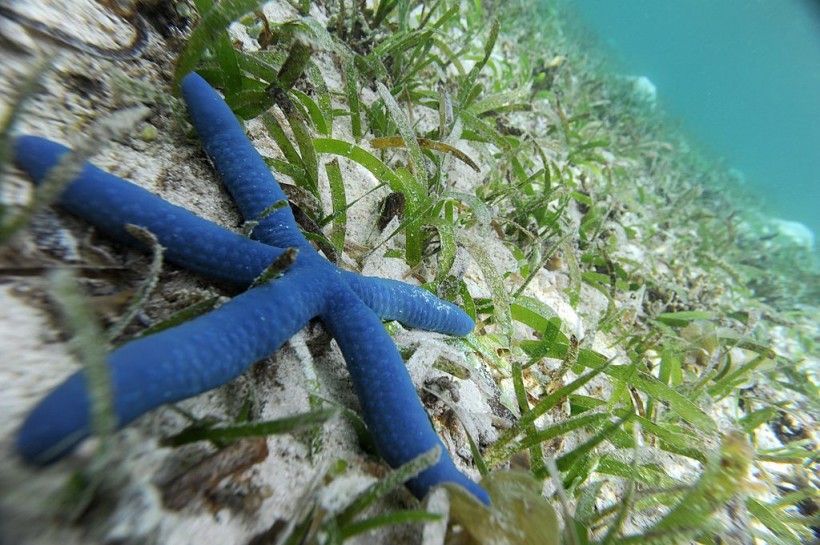The northeast Pacific is full of water bodies containing eelgrass meadows. These sheets spread across the entire ocean floor, similar to what a normal front lawn looks like. The aquatic meadows serve as tiny ecosystems for a vast range of marine life, including salmon, mussels, and crabs.
But the peaceful habitats are threatened by an aquatic problem known as seagrass wasting disease that infects the plants and their residents.
What is Seagrass Wasting Disease?

TO GO WITH AFP STORY INDONESIA-TOURISM-PAPUA-MINES, FEATURE BY LOIC VENNIN In this photograph taken on October 22, 2011, a blue starfish lay on a bed of seagrass in the waters of Raja Ampat's Mansuar Island located in eastern Indonesia's Papua region. Called the last paradise on earth, the Raja Ampat archipelago was nominated as UNESCO's World Heritage Site. Its largely pristine environment is considered one of the most important marine biodiversity in the world.
Seagrass wasting disease is a marine infestation that slowly destroys eelgrass beds. Among the noticeable signs of the condition is dark lessons that spread across the eelgrass.
In the 1930s, the seagrass-wasting disease wiped out a large volume of healthy eelgrass in the regions of the Atlantic. After the event, more than five decades passed before the scientific community was able to identify what caused the problem.
A microscopic pathogen called Labyrinthula zosterae was found to be the root of the contamination.
Bigelow Laboratory for Ocean Sciences disease ecology expert Maya Groner said in a report by Hakai Magazine that the organism behind the seagrass wasting disease is indeed widespread. However, a large decline of seagrass rarely occurs, she continued.
A new study led by scholars from Cornell University found that, while the seagrass-wasting disease does not kill the plants, there are associated effects that the epidemic could relay to the eelgrass and the communities it houses.
ALSO READ: Larger Biodiversity Still Hidden in Deep Seafloor, May Have Part in Regulating Global Climate
Pathogen-Infected Eelgrass
The latest investigation on the seagrass wasting disease was focused on how the problem impacts the wild eelgrass. The authors involved several samples from intertidal meadows located at Washington state's San Juan Island.
Each of the selected eelgrass shoots already infected by the disease was left with a mark and analyzed after a week.
According to their findings, the eelgrass shoots with larger lesions contained lesser sugar rates in their root systems buried underground.
Cornell's College of Agriculture and Life Sciences expert Olivia Graham, who authored the study, explained that the effects on the eelgrass could be long-term as the plants depend on the sugar content stored in the roots, especially during the intense temperatures of the winter season.
To have a clear comparison of the state of eelgrass through the observation, the authors captured the images of the plants before and after the allotted one week.
The blades recovered from the meadows revealed that higher rates of the seagrass wasting disease result in slower growth of the plants.
According to Groner, it can be assumed that the problem is a race between the plants and the pathogen. She added that when the lesions start to grow faster than the meadows' blades, the race is already decided by the uncontrollable condition.
The study was published in the journal Frontiers in Marine Science, titled "Effects of Seagrass Wasting Disease on Eelgrass Growth and Belowground Sugar in Natural Meadows."
RELATED ARTICLE: Sponge Community in Arctic's Langseth Ridge Thrives By Eating Ancient Occupants, Study Says
Check out more news and information on Ocean in Science Times.














